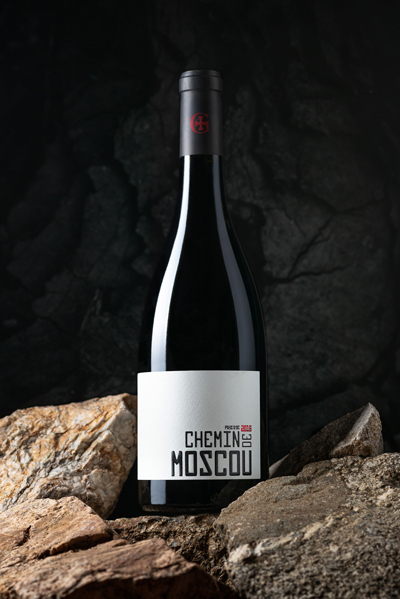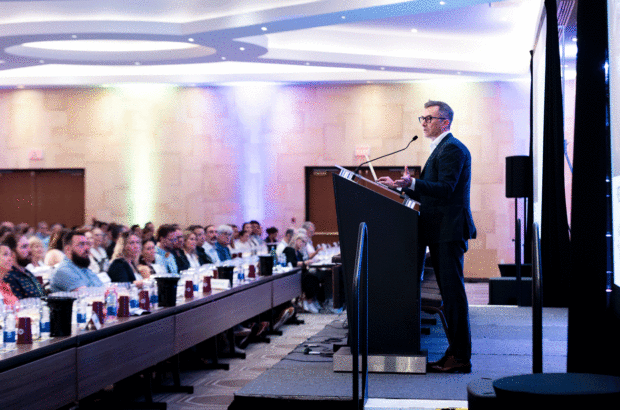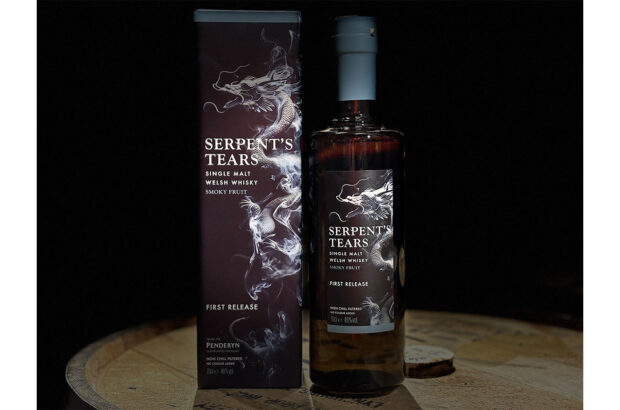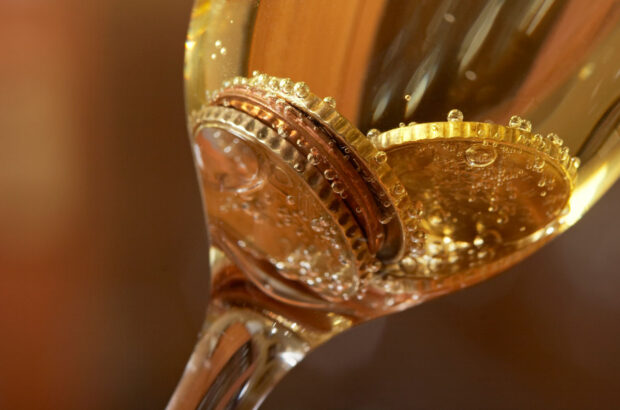Domaine Gayda is nestled in the heart of France’s south west, in the foothills of the Pyrenees surrounded by prime Languedoc wine territory. It is situated just 25km from the medieval walled city of Carcassonne in the village of Brugairolles.
Scroll down to see the Domaine Gayda wine tasting notes and scores
The family-owned estate was founded in 2003 by friends Anthony Record, a South African entrepreneur and Tim Ford, a British horticulturist and rose specialist.
The pair appointed Loire-born Vincent Chansault as their winemaker, persuading him to leave his post working for Marc Kent at South African winery Boekenhoutskloof in Franschhoek and return home to France where he has been ever since.
Origins
The venture started off with the estate – an 18th century farmhouse and Record’s former holiday home, with 12 hectares of land, but none under vine.
‘We started from scratch’ recalls Chansault, who brought his love of Loire grapes and freedom of expression in South Africa to this new Languedoc venture.

Domaine Gayda team: Tim Ford, winemaker Vincent Chansault and commercial manager David Chardron
Due to the limestone and sandstone soils, high pH and good rainall he opted, experimentally, to plant Chenin Blanc and Cabernet Franc alongside Mediterranean varieties Syrah and Viognier. He also chose straight away to eschew the appellation restrictions of Malepère in which the winery is physically located and instead decided to make wines under the IGP Pays d’Oc designation.
‘I never wanted to focus on just one place, I fell in love with so many, I was like a child with all their toys everywhere’, Chansault said during a Zoom call. ‘There was a similarity to South Africa in terms of diversity of soils, proximity to the ocean, as well as mountains and wide flat areas – it was such a playground’.
The team focused on soil analysis, rainfall and altitude factors to decide plantings and also to find plots of grapes to buy, but from day one there was an underlying energy to create wines of excellence with no preconceived ideas about specific varieties or terroirs.
An open mind, pioneering spirit and inherent curiosity have sustained 17 years of growth and transformation to a range that now spans 18 different labels. The estate owns 50 hectares under vine, all of which have been certified organic since 2011, with a future target of 80ha and buys grapes from all across the region.
All are labelled IGP Pays d’Oc with the exception of Villa Mon Rêve, the estate’s premium Cuvée, which is classified as AOP Minervois La Livinière.
Vineyard plots
Shortly after planting started on the chalky sandstone soils of Brugairolles, the team started looking to acquire other special plots in the region. They began with the Minervois appellations of La Livinière, paving the way for the creation of Chemin de Moscou, now the estate’s flagship wine.
‘At first it was all about La Livinière,’ Chansault said, highlighting specifically the special limestone terroir, the herbs of the garrigue and small vineyard plots in the mountains’. ‘This is an area where I truly believe quality lies’, he said.

Domaine Gayda grapes
They then added schist soils from plots bought in Roussillon and extended their mosaic of terroirs to include red clay in Saint-Paul-de-Fenouillet and granite in Latour-de-France, all with an underlying passion to create wines that champion the character of each place.
To do this, they opted for hand-crafted, single-vineyard fermentations using small tanks (15-100 hectolitres), 20-kg crates for harvesting and a selection of casks and vessels for fermentation and ageing.
‘It’s taken us years to get each style right and after 17 years we now know the vineyards that are most important to us’.
They are also committed to organics, and have since 2017 been working biodynamically. Working in harmony with nature and following that through to the final wine is of key importance. ‘We want to be as natural as possible’ said Chansault. No sulphur is used during fermentation and as little as possible during ageing. The team also sends wines to a laboratory for regular testing and has been working with Bordeaux consultant Thomas Duclot to become ‘more focussed’ in their approach.
Some of the estate’s labels have remained the same since inception – Chemin de Moscou while others such as the Figure Libre Freestyle range vary from year to year.
Domaine Gayda: a timeline
2003 Domaine Gayda founded
2004 Cabernet Franc and Chenin Blanc planted in Brugairolles and the estate acquired vineyards in La Livinière
2006 Wine tourism activities started with the opening of a restaurant and four on-site gites in the historic converted farm buildings
2007 First vintage of Chemin de Moscou released after spending two years maturing in oak casks
2008 Organic conversion underway
2011 Organic certification granted
2013 Winery expansion completed to cater for a new annual production topping 1 million bottles. All wines now bottled on site.
2015 First vintage of Villa Mon Rêve released
2017 Biodynamic practises started. The domaine acquired 18ha in Roussillon that was previously rented to secure the future of best-selling Chemin de Moscou. The end of the year also saw the launch of the new ‘En Passant’ range.
2018 The estate celebrated their 15th anniversary
2019 The 15th vintage of Chemin de Moscou and the creation of a brand new restaurant at the estate.
The ranges
Chemin de Moscou

Chemin de Moscou
The estate’s flagship wine and so called because Chemin de Moscou is the land registry name of the road leading to the vineyards surrounding the domaine. The wine is always Syrah dominant followed by Grenache and then Cinsault – the exact percentages vary but the hierarchy of grapes remains the same each year. The 2017 vintage for instance is 70% Syrah, 26% Grenache and 4% Cinsault.
‘Every year we add our best plots from Roussillon so it’s a blend of terroir but always the same terroir’ Chansault said.
Syrah: La Livinière, Latour de France, Calce, St Martin de Fenouillet & Brugairolles
Grenache: Tautavel & La Livinière
Cinsault: La Livinière
The wine undergoes two years of ageing, something the estate doesn’t want to change, however a nine vessel tasting in 2007 led them to decrease the proportion of new oak ageing as well as vinifying some Grenache in concrete eggs.
‘It’s always a mix, barrels are still important for Syrah but we find the Grenache fruit sometimes comes out better and brighter when it’s not constrained by so much new wood’.
The 2017 for instance spent 21 months in French oak : a third of the Syrah in ‘Burgundy’ new oak for nine months. Grenache and Cinsault in 500 litre ‘demi-muids’ and 2000 litre ‘foudres’ for nine months. Blending of the best barrels of each variety followed by a further 12 months maturation of the final blend in the same barrels.
Available for around £25.
Villa Mon Rêve
Domaine Gayda’s premium Syrah cuvee ‘the most beautiful in La Livinière’ says Chansault and the estate’s only appellation wine.
The name was inspired by a story about a stone cottage situated on the vineyard plots where the previous owner was caring for his ailing wife. She made a miraculous recovery and so the cottage became ‘Villa Mon Rêve’ the house of my dream.
The wine is made from north-east facing Syrah at 250m altitude on a limestone base (with a touch of Grenache) that is hand harvested at optimum ripeness. It reflects Gayda’s quest to display the quality of both grape and terroir.
One third of grapes are whole bunch fermented and two thirds destemmed without crushing. Natural fermentation and light pumpovers and punchdowns during four weeks of maceration. Ageing is in 2,000l oak barrels during 20 months without racking of the lees, bottled with no fining of filtration. The wine is then aged for 12 months before being released.
Available for around £40.
Figure Libre
Freestyle Blanc, Freestyle Rouge
Figure Libre freestyle is the name given to an ambitious range of wines designed to shake up conventions, breaking new ground for expressing the style of Languedoc and Roussillon wines.
‘These are unique wines with their own characters, it’s about having the freedom to source grapes that inspire me even though they’re all from different areas’, Chansault said.
The estate vinfies each grape and plot separately and could have ‘10 different Syrahs from 10 different vineyards’ and a thinking ‘outside the box’ mentality allows the meeting of grapes that wouldn’t ordinarily have ever come together.
Figure Libre
Cabernet Franc, Chenin Blanc
Away from the rigours of appellation rules, Loire varieties Cabernet Franc and Chenin Blanc were chosen as single varietal wines that would best express the sandstone terroir of Brugairolles.
Grapes were planted in 2004.
Available for around £15.
La Minuette Rosé
This pale-pink rosé comes from the limestone terroir of La Livinière and is a blend of Mourvèdre, Syrah, Grenache and Cinsault. It is aged on lees for three months before being bottled.
Its blush colour and floral bouquet represent the Minuette variety of rose planted in Kenya by Tim Ford in 1982, during his 25 years of rose production in Africa.
En Passant
Rouge and Blanc
This limited-edition range is produced from purchased grapes and changes each year along with the labels which are designed as a storyboard through the vintages.
Showing the estate’s creativity, and inspired by The Passenger anthem by Iggy Pop, the red and white wines are made from a different vineyard, terroir and grape variety every vintage. The 2019 rouge is a blend of 80% Syrah and 20% Cinsault while the white is 75% Macabeu and 25% Muscat d’Alexandrie.
‘We want our wines to have personality, to show people an expression of the grapes and terroirs we’re working with’.
With a range that spans red, white and rosé, single-varietal wines and blends, and including good-value picks from £7/$10 up to £40/$50, there’s plenty to discover.








